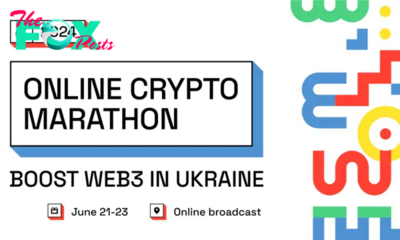Cryptocurrency
Most Used Stablecoin In Illicit Crypto Transactions, Reports TRM
While Tether (USDT), the world’s leading stablecoin, has been pivotal in facilitating transactions across the blockchain space, a recent analysis by blockchain analytics firm TRM Labs sheds light on a less desirable aspect of USDT’s ubiquity: its significant use within illicit crypto flows during the past year.
This development unfolds against declining overall volumes of illegal transactions in the crypto sector, a trend attributed to heightened sanctions and regulatory actions against various entities within the ecosystem.
At the Heart Of Illicit Crypto Transactions?
According to TRM Labs’ review, Tether accounted for $19.3 billion of the illicit transaction volume in 2023, marking a decrease from $24.7 billion in the preceding year. Despite this reduction, USDT remained the most utilized stablecoin for criminal purposes, including a notable dominance in terrorist financing activities.
TRM’s findings specifically highlight the use of USDT on the Tron blockchain, which hosts a “significant portion of Tether’s total volume,” as the preferred currency for terrorist financing entities. According to TRM, this blockchain saw a 125% increase in terror-financing-related addresses receiving USDT.
The analysis further breaks down the distribution of illicit flows across major blockchains. Tron was responsible for 45% of these flows, showing an increase from the previous year.
According to the report, the Ethereum and Bitcoin blockchains followed, facilitating 24% and 18% of the illegal transactions.
In comparison, the second-largest stablecoin, USDC, issued by Circle, was linked to a lower volume of illicit activity, totaling $428.9 million.
A Tether spokesperson said to Bloomberg in response to the TRM Labs report:
While we don’t have access to the report, historical evidence repeatedly shows that transactional figures have often been exaggerated due to a misinterpretation of data that assumes that if a service receives some small portion of illicit funds then all funds in the service are illicit, significantly iNFLating the actual values.
Notably, this shift in the landscape of illicit crypto transactions coincides with a broader trend of declining illegal fund volumes in the sector, which fell to $34.8 billion in 2023 from $49.5 billion the year before, as highlighted by TRM.
TRM Labs attributes this positive development partly to a “threefold increase in sanctions” and regulatory measures targeting “crypto-related businesses and individuals.”
Tether’s Efforts And Regulatory Scrutiny
Despite TRM’s claims in the report, Tether’s stance against the misuse of its stablecoin is worth noting. Last year, Tether collaborated with US authorities and the OKX crypto exchange to freeze $225 million of its stablecoin linked to a criminal syndicate.
Furthermore, last year, Tether faced criticism, including from the United Nations Office on Drugs and Crime, which pointed out the popularity of stablecoin among money launderers and fraudsters, especially in the context of online gambling platforms.
In response to these criticisms, Tether defended its operations, emphasizing the “transparency” and “traceability” of transactions on public blockchains, which, according to Tether’s CEO, Paolo Ardoino, makes USDT an “impractical choice” for conducting illicit activities.
The company also expressed disappointment over assessments that focus solely on the negative uses of its stablecoin, arguing that such perspectives overlook USDT’s role in supporting developing economies in emerging markets.

Featured image from Unsplash, Chart from TradingView
#crypto
-

 Cryptocurrency1m ago
Cryptocurrency1m agoRoblox’s “Adopt Me”: A Comprehensive Guide to Trading Values
-

 Cryptocurrency1m ago
Cryptocurrency1m agoThe Rise of Cryptocurrency in Online Gambling
-

 Cryptocurrency2m ago
Cryptocurrency2m agoExchanging FTM for wBTC in 2024: When Is the Right Time?
-

 Cryptocurrency2m ago
Cryptocurrency2m agoHere Are The best crypto wallets for Android devices
-

 Cryptocurrency5m ago
Cryptocurrency5m agoWhy Donald Trump Loves Bitcoin
-

 Cryptocurrency5m ago
Cryptocurrency5m agoBEVM Visionary Builders (BVB) Program Launches a 60 Million Ecosystem Incentives Program
-

 Cryptocurrency5m ago
Cryptocurrency5m agoClues To MKR’s Price Path Ahead
-

 Cryptocurrency5m ago
Cryptocurrency5m agoBitReXe: Enabling Parallel VMs on Bitcoin Network






























